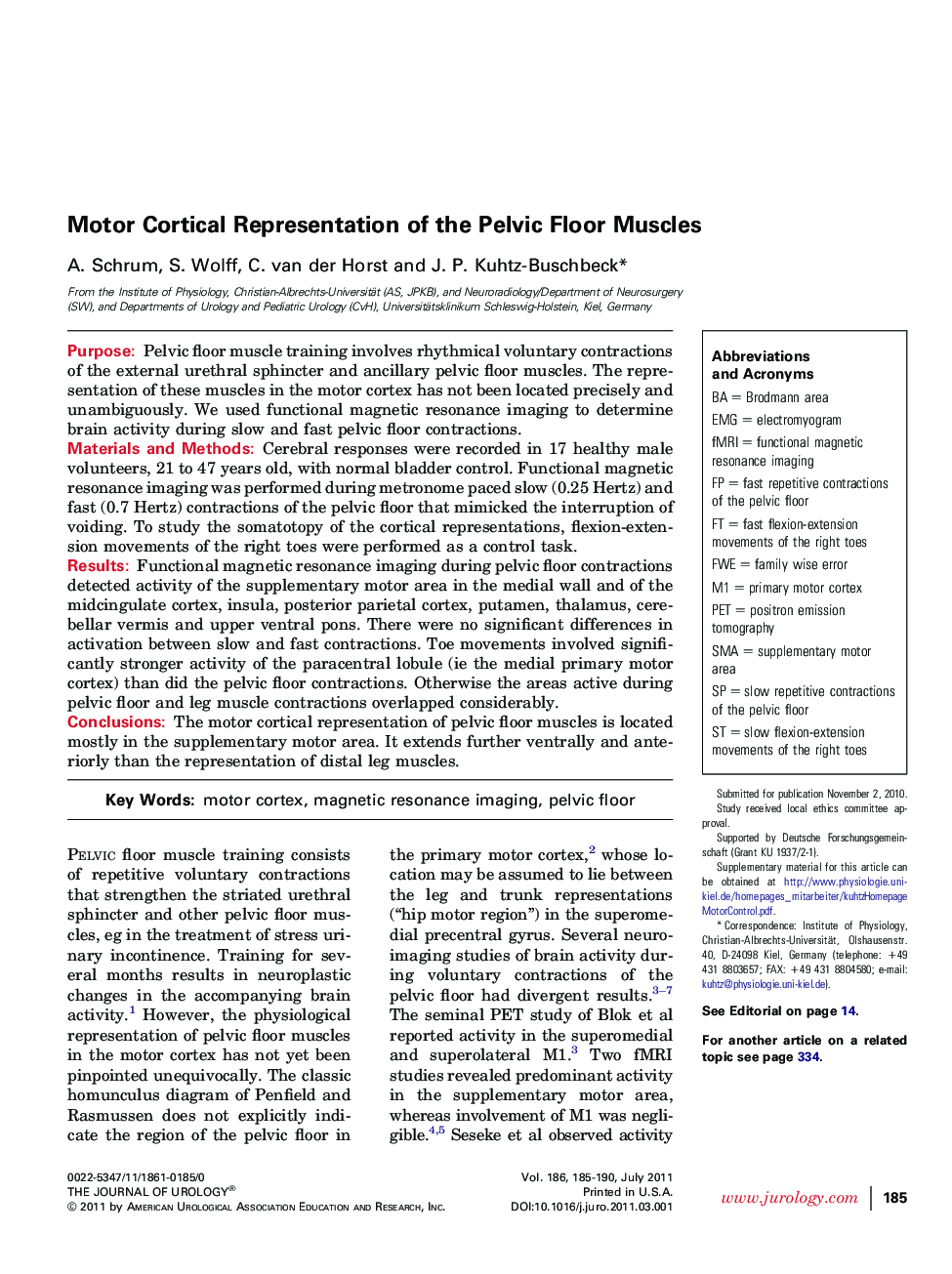| Article ID | Journal | Published Year | Pages | File Type |
|---|---|---|---|---|
| 3865798 | The Journal of Urology | 2011 | 6 Pages |
PurposePelvic floor muscle training involves rhythmical voluntary contractions of the external urethral sphincter and ancillary pelvic floor muscles. The representation of these muscles in the motor cortex has not been located precisely and unambiguously. We used functional magnetic resonance imaging to determine brain activity during slow and fast pelvic floor contractions.Materials and MethodsCerebral responses were recorded in 17 healthy male volunteers, 21 to 47 years old, with normal bladder control. Functional magnetic resonance imaging was performed during metronome paced slow (0.25 Hertz) and fast (0.7 Hertz) contractions of the pelvic floor that mimicked the interruption of voiding. To study the somatotopy of the cortical representations, flexion-extension movements of the right toes were performed as a control task.ResultsFunctional magnetic resonance imaging during pelvic floor contractions detected activity of the supplementary motor area in the medial wall and of the midcingulate cortex, insula, posterior parietal cortex, putamen, thalamus, cerebellar vermis and upper ventral pons. There were no significant differences in activation between slow and fast contractions. Toe movements involved significantly stronger activity of the paracentral lobule (ie the medial primary motor cortex) than did the pelvic floor contractions. Otherwise the areas active during pelvic floor and leg muscle contractions overlapped considerably.ConclusionsThe motor cortical representation of pelvic floor muscles is located mostly in the supplementary motor area. It extends further ventrally and anteriorly than the representation of distal leg muscles.
